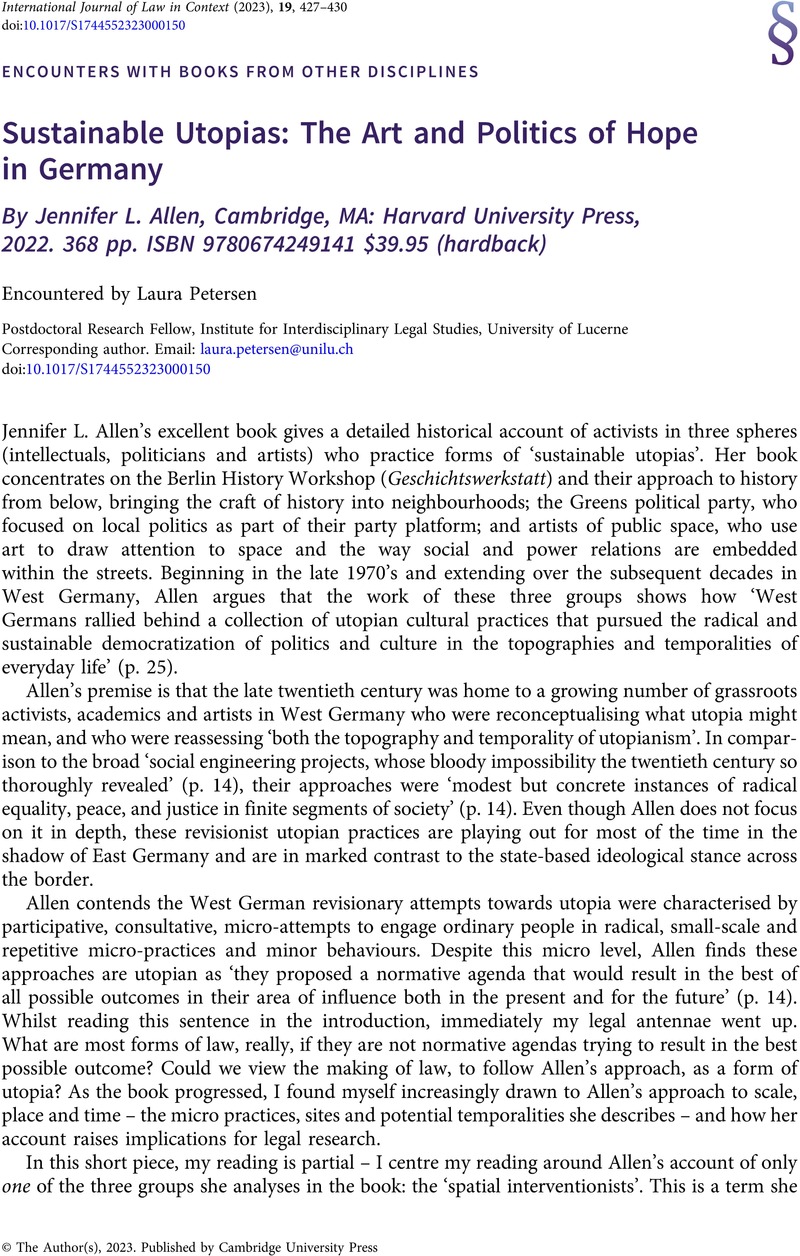Barr, O (
2019) How to Notice Kaleidoscopic Legal Places: Lessons From a Mural, a Street in Redfern, and Walking the City on Aboriginal
Country. [OnlineFirst, 25 November 2019]
Law, Culture and the Humanities.
10.1177/1743872119878059CrossRefGoogle Scholar 